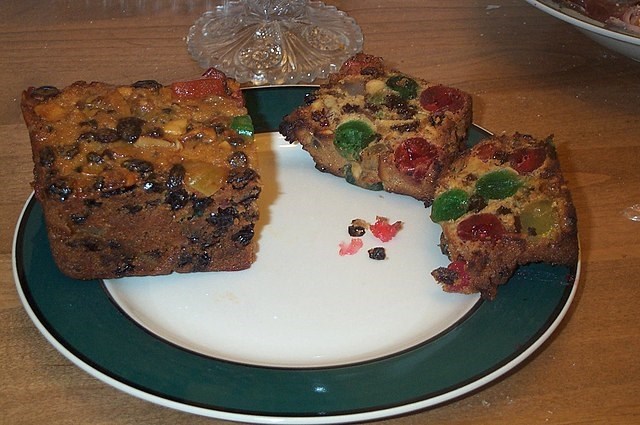Holiday fruitcake, yes or no? Kamloops, Okanagan foodies can't agree

Some people love spiced cake and some love candied fruit, but not everyone can agree that eating the two together is delicious.
When iNFOnews.ca asked the public for opinions on fruitcake last month, almost 100 foodies responded. Roughly half were all for the holiday treat while the other half were adamantly against it.
“Nope, don’t care how much rum they put in it,” was one response. “A big hell-yah – dark though please,” was another. Some merely said “Ewww,” “nasty” and “Soooo gross,” while others said “Absolutely,” “Yes please,” and “I like it.”
A few foodies commented that only homemade fruitcake was enjoyable, not the “nasty bleached glucose soaked with red and green dyed fruit” confections found in grocery stores this time of year.
Fruitcake bears the brunt of many holiday jokes for its density and long shelf life — using the cakes as doorstoppers and regifting them for years are common ones. In the 1960s, Johnny Carson famously said on The Tonight Show, “The worst Christmas gift is fruitcake. There is only one fruitcake in the entire world, and people keep sending it to each other.”
Love it or hate it the dense, richly flavoured cakes have a long history with origins dating back to ancient Egypt and are still baked, enjoyed and given as gifts around the world.
The cakes are made with a mix of dried fruits, nuts and spices and recipes vary widely. Like many other bread and cakes, fruitcake originated long ago as a treat when fruit wasn’t plentiful in the winter months. The fruits are preserved, dried, candied or glazed so they keep longer, and often the cakes are soaked in rum or brandy.
According to Encyclopedia.com, the ancient Egyptians made the cakes for dead people believing the density of it and preserved fruit could last the journey to the afterlife. Dates, citrus fruits and nuts were plentiful in the Middle East. Later the Crusaders brought fruit back home to Europe with them but it quickly went bad so the fruit was dyed and candied and mixed into breads to preserve it.
Fruitcakes and other fruity holiday treats rose in popularity in England during the Victorian times when other festive Christmas elements like trees and decorations also became popular. The cakes were wrapped in cheesecloth and soaked in brandy, and later unwrapped and coated with almond paste, royal icing and apricot glaze.
READ MORE: Kootenay teacher wins Great Canadian Baking Show with flavours from his backyard
In North America, the cakes became popular and more affordable in the American Colonies in the 16th century. According to PBS.org the cakes came to America with European colonists while there was an influx of cheap sugar from the Caribbean. Sugar was used to candy the fruit allowing summer fruit harvests to be preserved for Christmas.
READ MORE: Big White voted best snowboarding mountain in Canada
Today the traditional holiday cake is still a big part of the Christmas holidays with some sources reporting over 2 million fruitcakes are sold every year in America. At this time of year you can find traditional fruitcake, dark fruitcake that includes molasses and brown sugar, light fruitcake made with a white cake base, and nut and gluten free versions in major supermarket chains.
Do you like fruitcake? Will you be gifting it to a loved one this Christmas? Let us know in the comment section below.
To contact a reporter for this story, email Shannon Ainslie or call 250-819-6089 or email the editor. You can also submit photos, videos or news tips to the newsroom and be entered to win a monthly prize draw.
We welcome your comments and opinions on our stories but play nice. We won't censor or delete comments unless they contain off-topic statements or links, unnecessary vulgarity, false facts, spam or obviously fake profiles. If you have any concerns about what you see in comments, email the editor in the link above. SUBSCRIBE to our awesome newsletter here.


